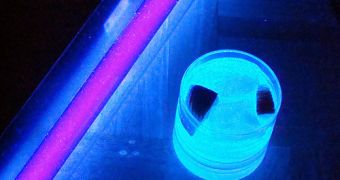Scientists at the University of New Mexico are working on a new surface that could kill antibiotic-resistant staph bacteria, when associated with fluorescent light.
The Methicillin-resistant Staphylococcus aureus (MRSA) infections are causing nearly 19,000 deaths and $3-4 billion in healthcare costs per year in the United States.
This disease affects people who have spent time in hospitals and contributed to the vicious circle of perpetrating the bacterium by touching a variety of surfaces.
The researchers thought that if they could develop an antimicrobial surface, this would reduce and event prevent the spread of possibly incurable strains of bacteria.
Today, the techniques used for sterilization and disinfection are surface-specific and temporary, demanding a constant attention from the medical and support staff.
Also, a less popular information is that even though infections and resistant strains have evolved, there was no development of new antibiotic and antimicrobial agents.
And since the 1950s, there were only three classes of antibiotics that have been developed, it was grand time for something new in this field.
The project of researchers at the University of New Mexico is to develop a new kind of antimicrobial surface that is deadly to MRSA but has no harmful effect on people or animals.
So they worked on a new polymer-type material called 'conjugated polyelectrolyte', or CPE, that has an arylene-ethynylene repeat-unit structure and it is effectively killing Gram-negative bacteria.
Also, there are certain 'light-activated' CPEs, that are harmless to bacteria, unless they are activated by light.
These last could be used as antibacterial counter-tops, that could be easily sterilized by using normal fluorescent light.
Scientists did not know until recently whether the CPEs were harmful for mammals or not, so they exposed bovine aortic endothelial cells to two different CPEs for periods of time going from 10 minutes to 24 hours, in both dark and light conditions.
This testing revealed that the polymers were not toxic to mammalian cells, which allows them to be part of further research on how to include them into antibacterial household and health care products.
The results of this research were presented yesterday at the AVS 57th International Symposium & Exhibition, taking place this week at the Albuquerque Convention Center in New Mexico.

 14 DAY TRIAL //
14 DAY TRIAL //